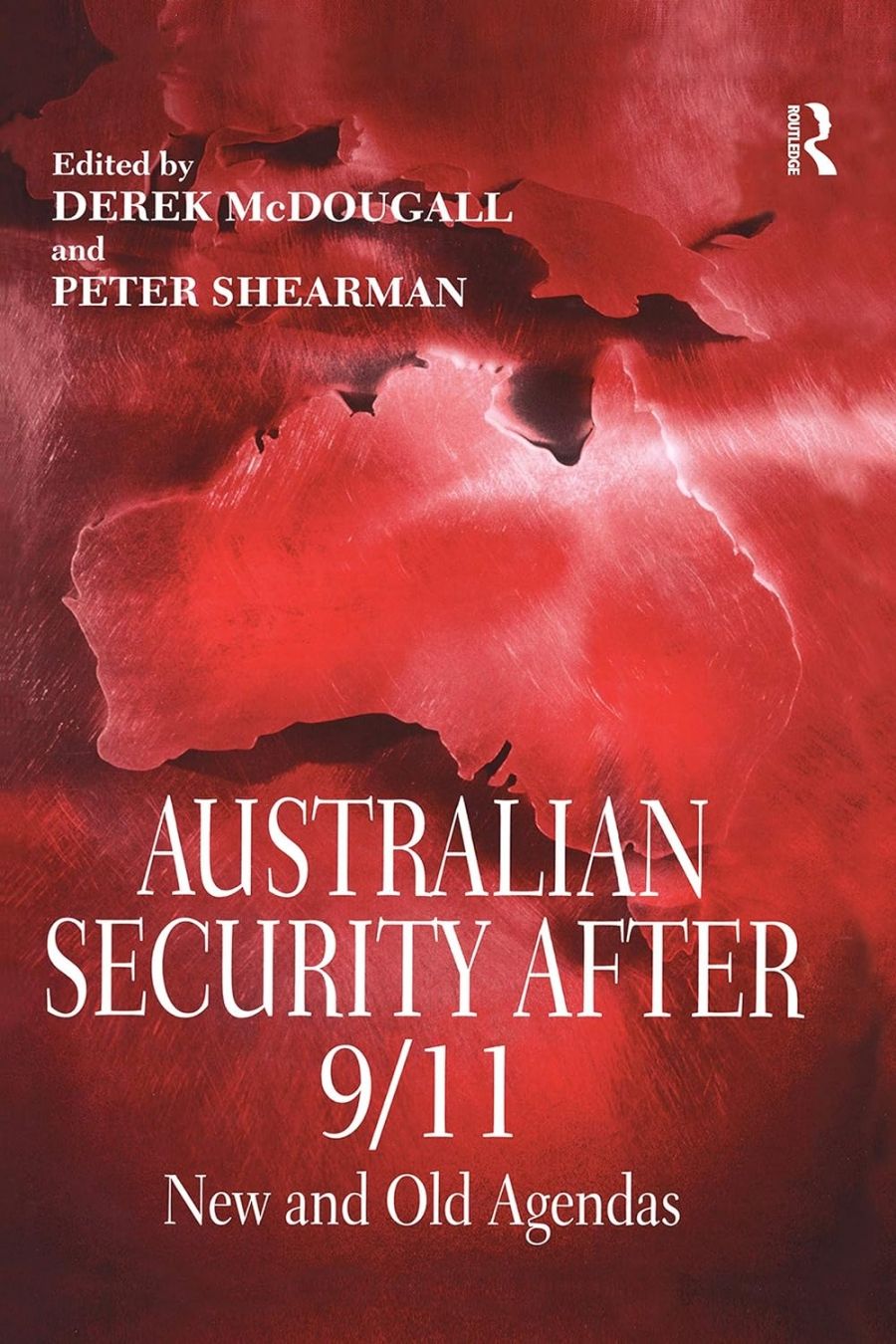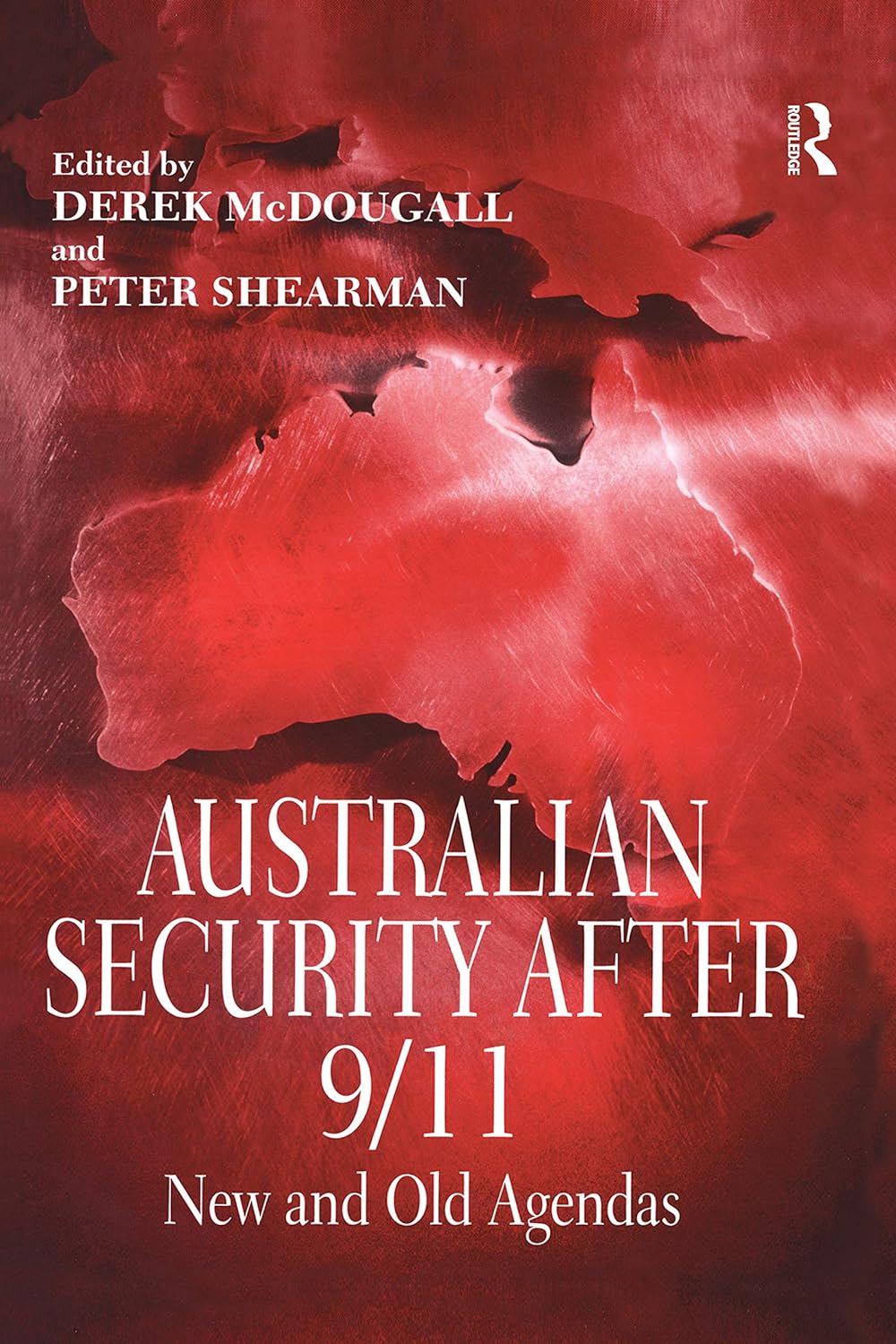
- Free Article: No
- Contents Category: International Studies
- Review Article: Yes
- Article Title: Still the frightened country?
- Online Only: No
- Custom Highlight Text:
A decade ago, security was the poor cousin to economics in policy studies and public discussion. When John Howard took office in 1996, we were in the midst of an era of euphoric globalisation in which the popular imagination was dominated by wonder at the spread of the free market, growing volumes of trade and finance, and seemingly ever-rising wealth and standards of living. As Paul Kelly has observed, Howard realised early that in this context a government’s perceived capacity to manage the economy – balancing budgets, reducing unemployment, keeping interest rates down – was, to the mind of the electorate, the prime indicator of its fitness to govern. Australians, living through the longest economic boom in decades, had become fearful of a return to the days of economic turmoil and uncertainty. In this era, national security was a most unfashionable topic – at best a distraction, at worst a distortion of the ‘beautiful numbers’ delivered by globalisation.
- Book 1 Title: Australian Security After 9/11
- Book 1 Subtitle: New and old agendas
- Book 1 Biblio: Ashgate, £50 hb, 206 pp, 0754645150
- Book 1 Cover Small (400 x 600):

- Book 1 Cover (800 x 1200):

September 11 brought security roaring back to prominence. Howard realised quickly that the terrorist attacks, along with the coexisting issue of asylum seekers, would promote the stewardship of national security to the top-most rung, alongside stewardship of the national economy, as the key measure of a party’s governing credentials in the mind of the electorate. Derek McDougall and Peter Shearman’s collection of essays, Australian Security After 9/11: New and Old Agendas, presents the first comprehensive examination of Australia’s security challenges and responses in the post-9/11 context. As James Walter argues in the volume’s final chapter, the new security concerns provided a context in which Howard thrived politically: ‘Thus Howard – who came to power arguing that he would create the conditions where people could feel “comfortable and relaxed” – was a fighter from the first ... He was, in effect, a crisis leader who began to identify threats, articulate the need to fight, institute tribal divisions between “them” and “us” and rally “the troops” well before international events accentuated the negatives.’
Australian Security After 9/11 offers a collection of essays that are informative and challenging. Taken together, they offer a much-needed corrective to the thinness of the academic and public discussion of Australian security, which seems increasingly divided between ‘deputy sheriff’ stereotypes and self-assertive, pull-up-the-drawbridges diatribes. The central question posed by the editors of this volume to its contributors is this: how has the Australian government managed (or failed) to reconcile responses to ‘new’ security issues – terrorism, illegal immigration, transnational crime, proliferation of weapons of mass destruction, environmental degradation – with planning for ‘old’ security challenges, such as the possible confrontation between China, Taiwan, Japan and the United States in the northern Pacific? In their separate chapters, Nick Bisley, John Henderson and Derek McDougall interrogate the nature of such ‘new’ security issues, highlighting in particular their conceptual incompatibilities with ‘old’ security concerns in ways that pose particularly difficult choices for governments trying to fashion a coherent security response. In a typically idiosyncratic and thought-provoking contribution, Richard Leaver throws economic insecurity into the new security basket, arguing that for Australia and Japan, the biggest economic threat is a United States bent on exporting the contradictions in its own economy brought on by the neo-Reaganomics of the Bush administration; only this time, Canberra and Tokyo are both less willing and less able to resort, as they did in the 1980s, to a creative, regionalist solution.
The choice between arming for new or old security challenges underpins much of the current defence policy debate in Australia. Ask a room full of security scholars and practitioners this question – which will more decisively shape Australia’s security over the next twenty-five years: the rise of China or Islamist terrorism? – and you will find they divide into two groups. For those more concerned about ‘traditional’ security issues – the rise and fall of great powers and the inevitability of their coming to blows – the main concern of Australia’s security policy should be to defend Australia, and, if so desired, to join the battle on one side or another. Because Australia is an island, and because any conflict is likely to take place in the northern rather than the southern Pacific, this logically prioritises hi-technology naval and air forces over land forces. But for those concerned about ‘non-traditional’ challenges, problems such as terrorism and failing states are impervious to hi-tech naval and air forces. They point to how ill-prepared the Australian Defence Force was for even the limited, close-to-home East Timor operation; and warn that a defence force called on increasingly to address problems of transnational threats and failing states needs to be more army-centric, flexible, and multi-skilled.
The principal author of Australia’s 2000 Defence White Paper, Hugh White, argues that the Howard government has responded by hedging its bets. Observing that ‘talk is cheap, but military capabilities are expensive’, White deduces from the government’s weapons purchases a determination to maintain and upgrade Australia’s hi-tech air and naval forces while at the same time bringing online more flexible formations of ground troops (including special forces) and providing them with the sort of armoured support necessary in an urban warfare, collapsing state contingency. White, however, is critical of the government’s choices, arguing that ‘the unifying theme behind these choices appears to be a move away from a focus on the capacity of Australia’s land forces for independent operations in Australia’s immediate neighbourhood, and towards priority for supporting the United States in coalition operations in more intense conflicts in places like the Middle East’. He continues:
The apparent implication is that Australia is significantly less likely in future to need to undertake operations except as part of a US-led coalition … But does that conclusion contribute to a coherent response to Australia’s post-9/11 security priorities? That depends in large part on future US strategic policy …
Leaving largely implicit the perils of mortgaging Australia’s strategic doctrine to the choices of a Bush administration still not halfway through its final term, White turns to possibly his most telling criticism of the Howard government’s strategic policy, its increasing disjunction from Australia’s foreign policy priorities:
The picture that emerges from some aspects of the Howard government’s post-9/11 strategic policy, that Australia is moving into an ever-closer strategic alignment with the US, is in tension with the other major trend in Australian foreign policy in recent years – the emergence of an increasingly intense economic, political and even strategic relationship with Beijing.
This issue – whether the Howard government has been able to balance the demands of the alliance with a post-9/11 United States with its continuing interests in Asia – is the central focus of Bill Tow’s chapter. Tow is much more cautious than White in describing the intimacy, and the potential, of Sino-Australian ties:
Sino-Australian relations can best be viewed as a tacit bargain observed by both sides to cultivate economic and diplomatic ties within clearly defined parameters. For China, this entails ‘understanding’ Australia’s aim to sustain its close security alliance with the United States ... For Australia, it means building solid economic relations with Beijing and translating that economic partnership into a Chinese willingness to support Australia’s expanded participation in regional institutions and community building.
Tow suggests that the Howard government has been particularly adept at using the post-9/11 security environment, which has seen a remarkable convergence of American, Australian, Chinese and South-East Asian security interests, to strengthen its ties with Washington and Beijing in a mutually reinforcing way, while slowly decoupling the Sino-Australian relationship from the ‘old’ security preoccupations of the Sino-American relationship. He argues, however, that the job is only half done: next, Howard needs to convince the United States to reconceive its alliances from instruments of American dominance in the Pacific towards elements in a more complex power sharing arrangement in the region.
Several of the chapters of Australian Security After 9/11 are devoted to analysing the role of the United States, acknowledging that country’s centrality to the evolution of both ‘old’ and ‘new’ security issues. Michael Cox examines the nature and durability of America’s informal ‘empire’. Peter Shearman’s essay focuses on the role of ‘identity politics’ in explaining the strategic closeness between Australia, Britain and the United States. His cautious conclusion is that:
Interests determine policies in Washington, London, and Canberra, based on material considerations, not ideational ones. If an Anglosphere exists, it does so in the minds of a few individuals … it is not sufficiently or widely enough imagined to produce a strong political force …
One of the great strengths of this volume is the richness of the contributors’ grapplings with the politics of security choices facing governments. Richard Chauvel’s chapter on Australia–Indonesia security relations highlights the ongoing challenges posed by different perceptions and interpretations of security issues on each side of the Arafura Sea. Rob Ayson’s consideration of convergences and divergences between Canberra and Wellington on strategic policy sets out in clear detail the impact of different security perceptions and strategic positions on states’ security policy choices.


Comments powered by CComment